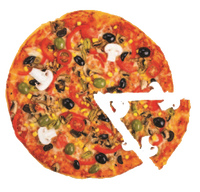It’s Never About Me
Jane Indergaard, DNP, RN
Attention Magazine February 2023
Download PDF
It’s Never About Me: Strategies to Meet the Hidden Needs of Siblings of Kids with ADHD
The shock and disbelief when our pediatrician told us that our eight-year-old child had ADHD has been etched in my mind for over eighteen years. Mostly, my view of ADHD, gleaned from the three related paragraphs in my undergraduate nursing school textbook, didn’t match the day-to-day barrage of behaviors, challenges, and stresses we were experiencing. Eventually, my training as a nurse, work as a college professor, and vocation as a mother kicked in, and I began attacking the literature and information on ADHD with a vengeance. My husband and I were committed to doing the best we could for our boisterous, loving, but clearly struggling child.
 Unlike then, a tremendous amount of helpful information now exists on the impact of ADHD. Many resources are now available on strategies to manage it from the perspectives of the affected individual, parents, caregivers, and educators. And yet, very little to no research or discussion exists on the impact for a sibling growing up in a household with a child with ADHD.
Unlike then, a tremendous amount of helpful information now exists on the impact of ADHD. Many resources are now available on strategies to manage it from the perspectives of the affected individual, parents, caregivers, and educators. And yet, very little to no research or discussion exists on the impact for a sibling growing up in a household with a child with ADHD.
We know that the sibling relationship is one of the most intense and long-term relationships in one’s life. Those who study family dynamics and psychology emphasize the sibling relationship as an important context for learning and development. Furthermore, the well-documented stresses, challenges, disruptions, and emotions in a household with ADHD impact the lived experience and adjustment of everyone in it. As a result, both parents and siblings have unique support needs. However, when parents are submerged in the daunting tasks of supporting their child with ADHD, they can become engulfed in that single focus, while the needs of their child’s siblings may potentially be eclipsed.
A few years back, my college-aged daughter, who was then studying rehabilitation and human services, accompanied me to a conference on ADHD. She seemed engaged, and grateful for the information presented. But at the end of the day, as we relaxed in our room, she became quiet, and eventually expressed some conflicting emotions, triggered by the day’s presentations. It seemed everyone involved with ADHD had been addressed, except the siblings of affected individuals. “It’s like we don’t matter or aren’t impacted,” she shared.
This prodded me to scope the literature again to unearth information on the impact of ADHD on the siblings in a household, and what specific or unique supports are recommended. What I did uncover—though it wasn’t as vast as I would have liked—needs to be shared. Here, I will attempt to synthesize and summarize what I learned to help families better understand the impact on siblings and gain knowledge of strategies to address their needs, with the goal of supporting improvement in total family well-being and relationships in a household affected by ADHD.
Postcards from the edge
Despite the sparse literature on this topic, some interesting and compelling case reports, editorials, and even a few research studies, have been done. In my review, I noted a glaring pattern across the literature of four recurring themes on the reported lived experience of siblings of kids with ADHD from both empirical observations and in candid narratives of the siblings themselves (including my own now-adult kids). I affectionately called these self-reports postcards from the edge, some of which will be shared in the summary below. There were four common lived experience themes.
DISRUPTION AND EXHAUSTION
 The overwhelming adjective measured (in research) or described (in case study or anecdotes) among siblings in an ADHD household revealed ongoing, daily disruption of family life, including high levels of conflict, emotional arousal, and household chaos. Siblings reported annoying, frustrating behaviors, being victims of aggression or manipulation from the sibling with ADHD, and reciprocal events of victimizing or being aggressive toward their affected sibling (Peasgood et al., 2016). In short, the ADHD behaviors of their sibling could also bring out “the worst in them.” The daily toll was relayed as exhausting emotionally, relationally, and sometimes even physically.
The overwhelming adjective measured (in research) or described (in case study or anecdotes) among siblings in an ADHD household revealed ongoing, daily disruption of family life, including high levels of conflict, emotional arousal, and household chaos. Siblings reported annoying, frustrating behaviors, being victims of aggression or manipulation from the sibling with ADHD, and reciprocal events of victimizing or being aggressive toward their affected sibling (Peasgood et al., 2016). In short, the ADHD behaviors of their sibling could also bring out “the worst in them.” The daily toll was relayed as exhausting emotionally, relationally, and sometimes even physically.
Postcards from the edge:
“We were constantly late or running back and forth for my sister’s forgotten homework, backpack, and gym clothes. She was never ready on time for school, and we would all get frustrated and stressed about missing the carpool.”
“My brother knew he could get away with teasing me because my parents were too worn out and that if I complained I would not be believed and he knew which buttons to push.”
REDUCED QUALITY OF LIFE
 Siblings in the household experienced family life as focused and dependent upon the child with ADHD. Their own comfort, satisfaction, well-being, and happiness was perceived as obscured by the needs and attention required by their neurodiverse sibling. This created strong feelings of isolation, unappreciation, and even rejection.
Siblings in the household experienced family life as focused and dependent upon the child with ADHD. Their own comfort, satisfaction, well-being, and happiness was perceived as obscured by the needs and attention required by their neurodiverse sibling. This created strong feelings of isolation, unappreciation, and even rejection.
Postcards from the edge:
“Every day it seemed my parents had to ‘choose their battles’ and the mood of the house seemed controlled by my sibling. If we had to decide between his choice (for example, a pizza topping) and mine, it usually went to him. I had to be the ‘bigger’ person.”
“My parents made consequences for certain behaviors of my sibling. Sometimes those consequences affected the whole family, like when we had to turn around from a family road trip because she wouldn’t quit acting up.”
“For me, it wasn’t my sibling’s hyperactivity that was exhausting, rather it was the constant experience of their needs overshadowing mine.”
IMPAIRED RELATIONSHIPS IN THE FAMILY AND BEYOND
 The unaffected children in a household reported that parents were chronically stressed, preoccupied, and perceived to engage in differential parenting, treatment, and discipline. The sense of “unfairness” in time, attention, expectations and discipline left the unaffected sibling feeling jealous, victimized, and taken for granted. This often resulted in reports of strained relationships with their parents.
The unaffected children in a household reported that parents were chronically stressed, preoccupied, and perceived to engage in differential parenting, treatment, and discipline. The sense of “unfairness” in time, attention, expectations and discipline left the unaffected sibling feeling jealous, victimized, and taken for granted. This often resulted in reports of strained relationships with their parents.
They also described being keenly aware of the judgment of neighbors, friends, and extended family members, as ADHD behaviors can incite negative social interaction. Additionally, they reported that the very same individuals, who could have served as a haven or release, avoided them and their family.
Postcards from the edge:
“It seemed like I was expected to complete more chores than my brother. He also got praised more for the little things he did, like complete his piano practice. Whereas it was not a big deal when I would do it.”
“Whenever my sibling didn’t do what was expected at a family gathering, I would see rolling eyes and disapproval in the faces of my relatives. We were constantly told our parents weren’t strict enough. Many times, we would have to leave early. Sometimes we wouldn’t be invited to gatherings.”
CONFUSING EMOTIONAL CONFLICT
Siblings of children with ADHD described significant conflict between feelings of anger and resentment and those of sadness, loss, anxiety, guilt, and worry for their exhausted parents and struggling sibling. At the same time, they reported an overwhelming sense of powerlessness. Loss and sorrow about not having a “normal” family life, guilt for not having the issues their sibling has, and embarrassment juxtaposed with empathy are common conflicting and confusing emotions reported by neurotypical kids in a household with ADHD. Some even developed traits of perfectionism, overcompensation, and “parentification” by taking on the needs (sometimes unwillingly) of the household or their sibling in order to ease the burden on their parents (King et al., 2016).
Postcards from the edge:
“My parents had a lot of stress dealing with my sibling, so I felt I had to be perfect to avoid giving them any further trouble.”
“I felt bad when my sister got in trouble and missed things because of detention but there was nothing I could do.”
Daily life is different and far more challenging with a neurodiverse child than in a typical family. If you are parenting a child with ADHD, you are stressed, and it is clear that the siblings of these children are stressed too!
Taking action
Not every family will experience any or all of these reported issues. But clearly all members in a family of a child with ADHD can be affected in profound ways. You may be asking, how, with limited time, energy and emotional reserve, are you to foster and support the siblings’ well-being and the sibling relationship in the face of everything else? The challenges are real and happily, so are the solutions.
Helping to mitigate any negative impact includes validation, impacting the sibling’s framing of the neurodiversity, and finding ways to build cohesion and adaptability within your family. These are the goals. However, as in all parenting challenges, it is also vitally important to know how to achieve them. Strategies for successfully reaching those goals include the following.
EDUCATION
Get informed and educate the entire family about ADHD. Arm all family members with the ability to answer questions and help inform others about their siblings’ challenges. Modeling advocacy and having ready scripts to explain behaviors and needs are very helpful and reduce stigma. It can be as simple as, “I need glasses to see the board in school and my brother needs (medication, to sit up front, etc.) in order to pay attention in class, because his brain works differently.”
AWARENESS
Try to make your home a sanctuary for everyone. What do you want your children to remember and carry forward? Are there changes you can make to the emotional flavor of your home through listening, watching, noticing, and connecting? Listening to your child’s report of issues tells them that their feelings matter and provides validation. When you watch and notice every child’s expression of compassion, support, and effort, you foster connection and appreciation for each other. Also watch and notice any self- or parent-imposed pressure on the part of a sibling to be perfect or take care of tasks or issues that are not their burden to bear.
COMMUNICATION
Communication helps the neurodiverse child’s sibling feel noticed, appreciated, and validated. It affirms them and your relationship with them. Keep in mind that if we don’t affirm our family members, they may look for it elsewhere.
Some interesting information about communication and the impact on the sibling relationship with their neurodiverse sister or brother has been brought forward. Maleki-Tehrani (2006) conducted a study on the impact of communication in households with Tourette syndrome and found strong correlations between communication regarding the neurodiversity to non-affected siblings and resultant warmth, family cohesion, and adaptability. This is thought to be the result of the moderating effect of communication on the non-affected sibling’s “fairness evaluation” of differential treatment on the part of parents. In fact, the investigator found that acceptance of the perception that fair is not equal, but rather each according to their need, had a huge impact on family relationships and predicted positive family cohesion and adaptability. Since a key conflict reported in the family with ADHD is a sibling’s sense of unfairness, this could have very important implications in content focus for communication.
TIME
Time issues can be addressed by focusing on three elements of the distribution of time, including one-on-one time, family time, and time away.
Adult children frequently reported that individual time with their parent was the most important factor helping to build or repair the relationship. Therefore, it is important to spend one-on-one time with each child in the household. Being noticed and having the time for uninterrupted communication is very validating for a child. It can be as simple as sitting on their bed for a quick talk at the end of the night, or as big as a special date night or fun event done alone with each other. It’s not the extent or the event, it’s the uninterrupted, undivided attention they have with you.
Also, take time to plan and establish regular family activities that everyone enjoys to build family cohesion and the sense of belonging. This helps preserve the nuclear family identity around positive memories.
Spending time in an ADHD household can often be draining. The third aspect of “time allocation” is time away. Relationships can be improved by the chance to “get back from the front” to refresh and refuel. Recruit relatives and friends to give siblings a break, allowing them to have their own time, space, and a chance to reset.
Emotional health of the primary caregiver
Finally, a crucial point for improving relationships of everyone in a household with ADHD (both the individual who has it and those who don’t) relates to research which indicates that the emotional health of the primary caregiver is the single most significant factor for positive family well-being and relationships in the families raising a child with ADHD.
Therefore, know that it is not only okay, but essential, to work on you. Take care of your physical needs. Get assessed and treated for any mental health issues. Take a break from your child. And keep learning all you can about ADHD.
 Jane Indergaard, DNP, RN, is an associate professor of nursing at Concordia College in Moorhead, Minnesota, and a licensed registered nurse in North Dakota and Minnesota. A recognized regional, national, and international speaker on ADHD, she has presented on the underdiagnosis of ADHD in women, the impact of hormonal fluctuations on ADHD symptoms across the lifespan, the impact of ADHD on siblings, and the enhanced impact of comorbidity with ADHD and family stress. Dr. Indergaard is a long-standing passionate provider of education, advocacy, training, and outreach for individuals living with ADHD. She provides consultation for multidisciplinary psychoeducational programming for providers treating individuals with ADHD. She is the local co-founder of the award-winning Red River Valley CHADD, an affiliate of the national CHADD organization. She is most proud of her roles as a wife, mother to three fabulous adult children with ADHD, and grandmother to three perfectly adorable grandchildren.
Jane Indergaard, DNP, RN, is an associate professor of nursing at Concordia College in Moorhead, Minnesota, and a licensed registered nurse in North Dakota and Minnesota. A recognized regional, national, and international speaker on ADHD, she has presented on the underdiagnosis of ADHD in women, the impact of hormonal fluctuations on ADHD symptoms across the lifespan, the impact of ADHD on siblings, and the enhanced impact of comorbidity with ADHD and family stress. Dr. Indergaard is a long-standing passionate provider of education, advocacy, training, and outreach for individuals living with ADHD. She provides consultation for multidisciplinary psychoeducational programming for providers treating individuals with ADHD. She is the local co-founder of the award-winning Red River Valley CHADD, an affiliate of the national CHADD organization. She is most proud of her roles as a wife, mother to three fabulous adult children with ADHD, and grandmother to three perfectly adorable grandchildren.
REFERENCES (in order of appearance)
Peasgood T, Anupam B, Biggs K, Brazier J, Coghill D, Cooper D, Daley D, Silva C, Harpin V, Hodkins Pl, Nadkarni A, Setyawan J, and Sonuga-Barke E. (2016). The impact of ADHD on the health and well-being of children and their siblings. European Child & Adolescent Psychiatry, 25, 1217-1231. doi:10.1007/s00787-016-0841-6
King K, Alexander D, and Seabi J. (2016). Siblings’ perceptions of their ADHD-diagnosed sibling’s impact on the family system. International Journal of Environmental Research and Public Health, 13, 910. doi:10.3390/ijerph13090910
Maleki-Tehrani M. (2006). Sibling relationships and family dynamics in families with a child with Tourette Syndrome. UW Space-Waterloo’s Institutional Repository. http://hdl.handle.net/10012/2822
Other Articles in this Edition
Hyperfocus in College Students with ADHD
Summer Camp as a Growth Experience for Your Child
Learning How to Learn: The Magic of a Summer Program
Living Black with Undiagnosed and Untreated ADHD
ADHD and the Increasing Suicide Rate Among Black Youth
How We Survived as an Undiagnosed ADHD Family
